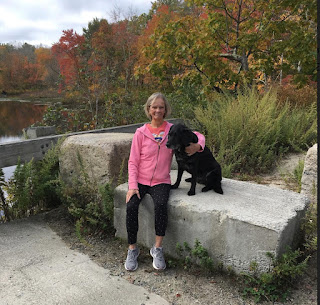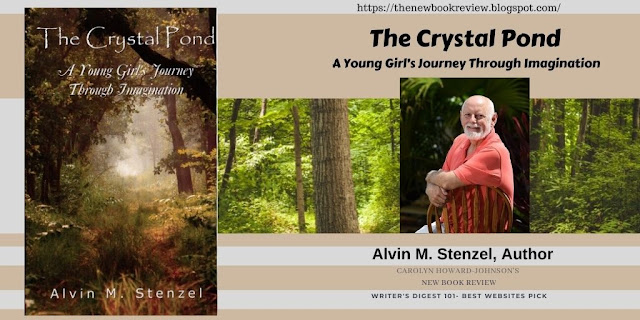C. C. Harrison, author of the Colorado Humanities Book Award Winning "Death by G-String," interviews five well known authors about how seeds of ideas grew into an actual books. They are Roger Johns, Margaret Mizushima, Jenny Milchman, Michael Ritt, and Scott Graham. Each one had an interesting story to tell. I it will give readers insight into the development of novels and inspire authors who frequent The New Book Review!

WHEN THE LIGHTBULB GOES OFF, An Idea is Born
Five by C. C. Harrison
Where do your ideas come from?
All authors are asked that question in some form or another. The scientific answer to that is the frontal cortex of the brain.
But did you know that different areas of the brain are utilized during plotting and brainstorming depending on whether you are a novice writer or an experienced one? In an experienced writer's brain, the speech area is highly activated as though an inner voice is reading a story to them. In a novice writer's brain, the visual processing center, the occipital lobe, is stimulated, and they see visual scenes like a movie in their head.
If you're interested in the scientific explanation for that, see "Creative Writer's Brain. What Happens To Your Brain When You Are Brainstorming a Plot or Writing a Story?" https://bit.ly/3pTZjZX
But for those of us more interested in the practicalities of idea generation, I asked some highly accomplished, award winning writers to talk about their lightbulb moment, how their seed of an idea grew into an actual book.
Margaret Mizushima said the idea for her hugely popular Timber Creek K-9 Mystery series came from brainstorming at the kitchen table with her veterinarian husband. He told her that a client who trained police and protection dogs had made an appointment for a health exam for a narcotics detection dog that he'd sold to the Forest Service. The dog was going to be used to detect drug trafficking in Colorado national forests.
"Wow! Suddenly I had the premise for my series," she said. "Merchants and ranchers from a small mountain town would pool their resources to purchase a narcotics detection K-9 for their local jurisdiction, the Timber Creek County Sheriff's Department."
It was an idea that grew beyond fiction into real life. Months after her book was published, she read an article about a police officer in rural Colorado who had approached his city council and asked if they would approve a local K-9 unit if he raised money to purchase the dog. His purpose was to combat local drug trafficking in his town. "I am certain that law enforcement officer did not read my book," said Margaret.
Sometimes, though, it helps to think like a criminal if you're a crime writer.
Roger Johns is the author of the Wallace Hartman Mysteries, River of Secrets and Dark River Rising. But before that, he was a college professor teaching international business transactions. One day on his way to class, he began to wonder why the cocaine cartels conducted their business as they did, because he had an idea about how to make their enterprises more profitable, easier to conduct, and a lot less vulnerable to law enforcement.
"That got me thinking about what such an innovation would look like as it hit the streets," he said. "There would be conflict between the old way and the new, so how would it look to a homicide detective trying to figure out where the wave of unusually brutal crimes plaguing her city were coming from."
When he began writing the book, his protagonist was male, but the story wasn't working. When he made the lead character female, he said the book practically wrote itself.
Author Jenny Milchman uses the "what if" method to come up with plots. Her ideas come from everyday moments when suddenly things go wrong, the dial gets turned, or a situation is cleaved into the before and after.
"For me, almost any situation can go like that. You know that moment when you stand at the top of a mountain and think what if someone came up behind me right now. Or on a subway platform and you see a sketchy character and wonder if he's ever pushed anyone onto the rails."
She's currently working on a book that grew out of a family vacation she took as a college sophomore. "I have a much younger sister and she and my mom stayed behind while my dad and brother and I went down by rope to explore this awesome cove at the bottom of a cliff. When we got back up to the road, they weren't there. Luckily the real life situation turned out well. In my new book—not so much."
Real life was the inspiration for the characters in author Michael Ritt's new book, The Sons of Philo Gaines. The idea came to him as his mind wandered while performing repetitive tasks at his job.
"I was thinking about my own sons and what they might have been like if they had been living in the late 19thcentury. My book is about three brothers, each as different from the other as they can be, who are trying to make a place for themselves in the Old West. One brother is a school teacher, one is a carefree gambler, and the other is a gunman.
"I used the qualities of my own sons to develop my three fictional brothers. There are a couple of subplots in the book that I was originally going to use in some short stories I was considering, but once I had the characters in place, the story seemed to form around them."
Each book in author Scott Graham's National Park Mystery series is driven by an existing national park, and an environmental or social justice issue specific to that particular park. That combination makes developing story ideas for his books a fairly straightforward process, he said. He doesn't have to search for story ideas, rather he needs to narrow them down. He picks a park to write about, and chooses an issue to address in that park.
Canyonlands National Park is the setting for his book, Canyonlands Carnage, scheduled for release in August by Torrey House Press. "I've visited the park regularly since I was a child, so I know it well. I love the magnificent red-rock beauty of Canyonlands as well as its remoteness, and I wanted to share those qualities with my readers."
Water scarcity is a critical issue in the American Southwest and Scott drew inspiration from those concerns and conflicts. "As climate change intensifies and as the region's desert cities grow, that issue stood out as one deserving of discussion in Canyonlands Carnage."
That led directly to his decision to set the primary mystery during a whitewater river rafting trip involving two conflicting groups—water policymakers and corporate water representatives. "Deaths piled up as the trip progressed."
My ukulele themed mystery, Death by G-String, a Coyote Canyon Ladies Ukulele Club Mystery, was the natural result of learning to play that instrument and joining the Phoenix Ukulele Club after I saw how cute Zooey Deschanel looked when she played her ukulele during an opening monologue of Saturday Night Live. On the other hand, my book Sage Cane's House of Grace and Favor came to me whole and complete from beginning to end.
Sorry, writers. Don't expect that to happen more than once in a lifetime, if at all.
More About Author and Interviewer C.C. Harrison
Mystery author C. C. Harrison has won national recognition for her writing. Her books are available in print and as ebooks, and can be found on Amazon and at fine bookstores everywhere. Harrison herself can be found in the desert, the mountains, or some far flung corner of the Southwest. Learn more about her at her website, www.ccharrison-author.com and www.christyhubbard.com. Writing as Christy Hubbard, she also wrote Sage Crane's House of Grace and Favor pictured above.













